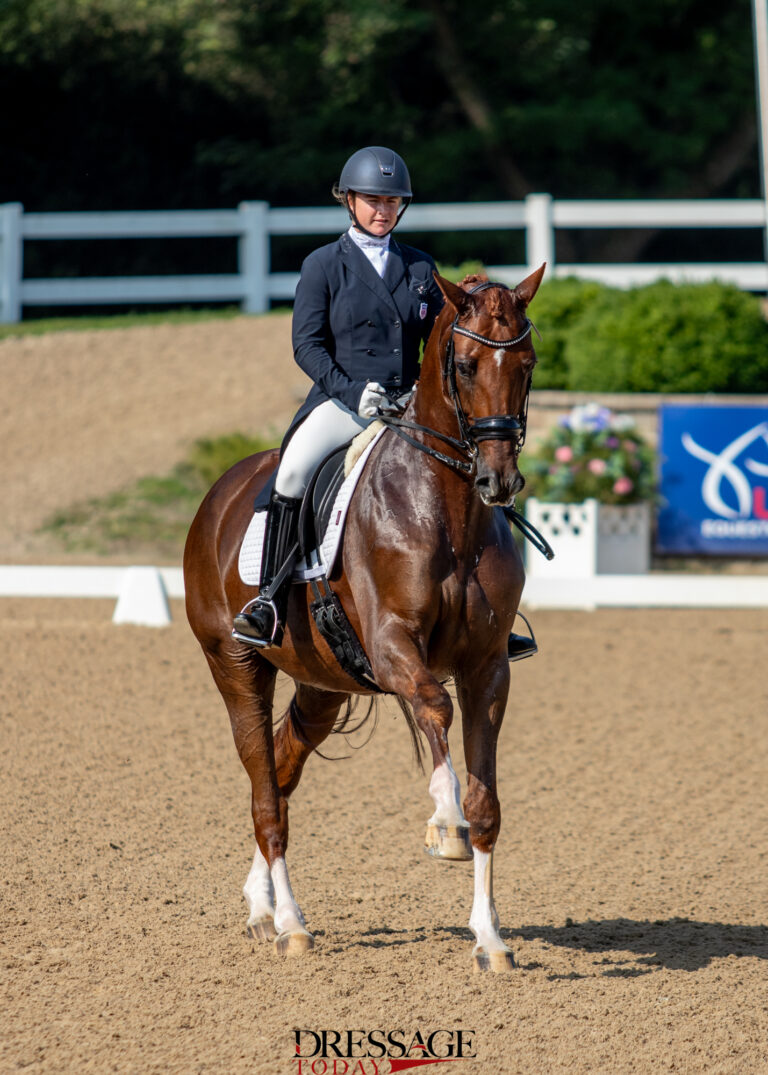While much of the city of Wellington, Florida, is still cloaked in the darkness of the early morning, a tall man on a bike glides along Pierson Road, eventually rolling into the gravel driveway of Palm Beach Equine Sports Complex. In a few hours, the facility will be abuzz with dressage horses, hunter ponies, riders and grooms moving in all directions. But for now, capitalizing on the last few silent hours of the morning, the man slides his feet into his cognac-colored tall boots, grabs his helmet and gloves and heads out to the arena with his first of many rides of the day.
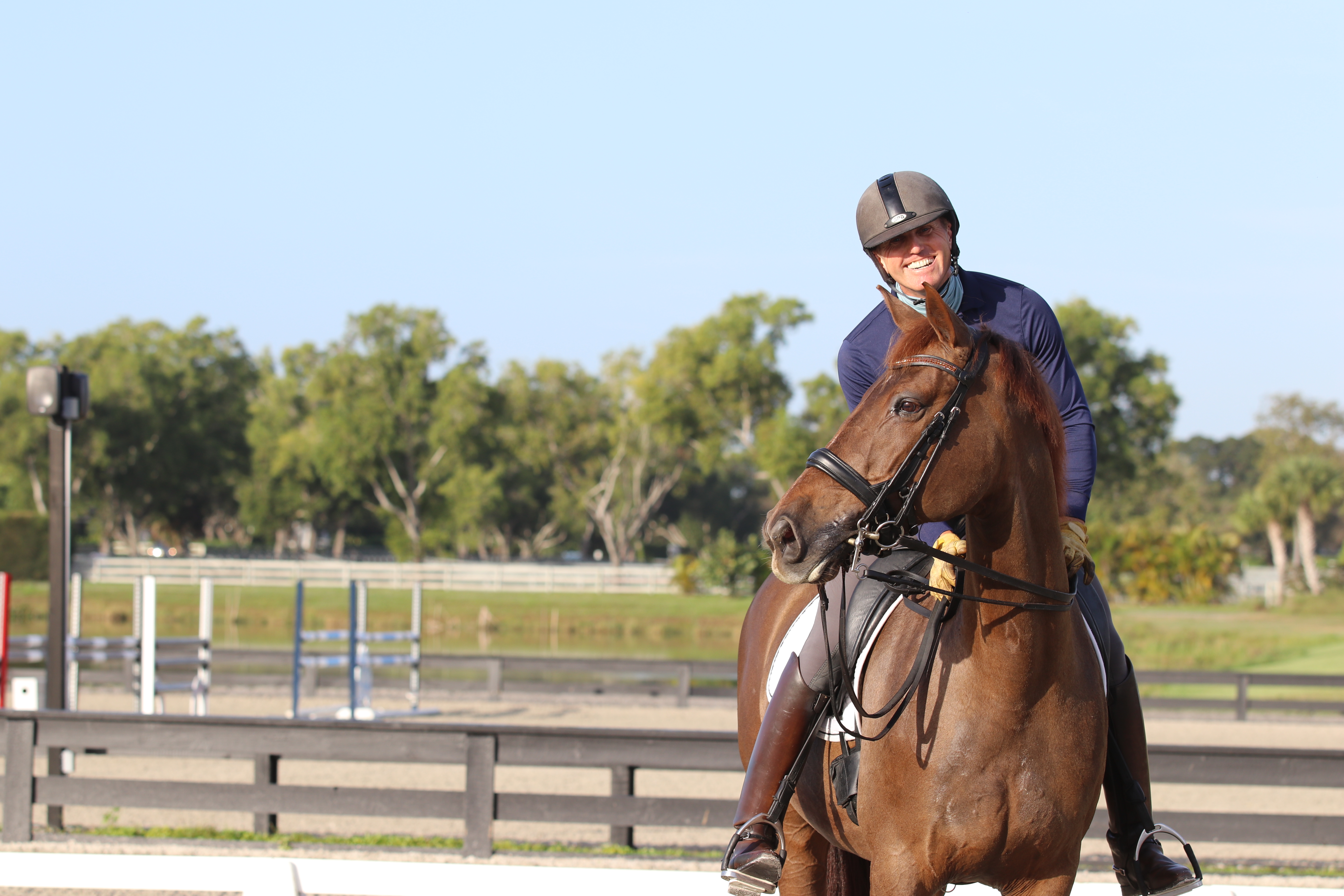
Grand Prix dressage rider Jan Brons doesn’t try to attract attention to himself, but if you’re someone with an educated eye, you’ll find that your gaze naturally follows him in a crowded arena. He has a statuesque build that suggests he was born to ride dressage, and his long list of accomplishments confirms the notion.
Brons is friendly yet direct. Though he is a man of few words, his dry sense of humor and sharp wit emerge even in brief conversation. Giving a lesson he is polite and diplomatic but has no fear of honesty or of silence.
A Typical Day
Brons loves the idea of a schedule and a plan, which is necessary for the busy program he balances, especially during the intense winter season in Wellington. During this time, his day begins at 5 a.m. to prepare for a day full of riding, teaching and training. After breakfast, he leaves his apartment by 6:15 a.m. and hops on his bike to head to the barn. The trek to the barn is about a four-mile ride. It’s relaxing because it’s a quiet time of the day and is also a great warm-up to ride, he says.
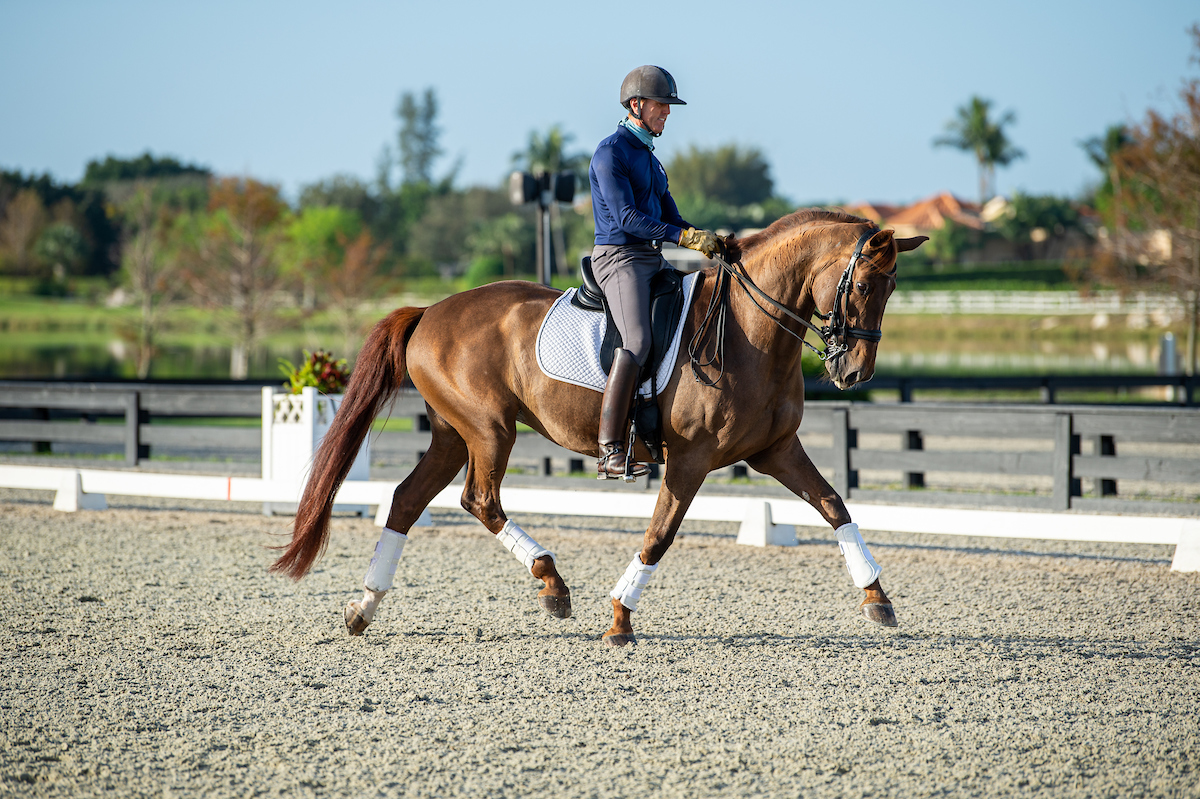
He is typically on his first horse by 7 a.m. In the winter, he values this time as an opportunity to be in the ring by himself. He works nonstop until about 3:30 p.m., switching between riding and teaching his clients. When he’s done at the barn, he rides his bike to the gym, about 1-1/4 miles away. He then finishes up at the gym and bikes home. Once home, he sorts through the mail, checks email, cleans up, spends time with his husband, Irwin, eats dinner and watches TV. He heads to bed around 9:30 or 10 p.m. and wakes up to repeat the process, six days a week. To accommodate competition and clinic schedules, Monday is typically his day off.
A Flexible Approach to Teaching
In his training and instruction, Brons focuses on simplicity and good basics. “Dressage should be easy,” he says. The approach works, as horses and riders leave the ring transformed into better versions of themselves. The concept translates to success in the show ring, too. His client Amy Swerdlin has been one of the top-ranked Adult Amateurs on the Wellington circuit and in the country. His groom and student, Nicole Baergen, with her horse Glen Emeril, progressed from Fourth Level to Grand Prix after 3 1/2 years of working with Brons. In 2019, he coached Roberta Foster of Barbados and her mare Chichic at the Pan American Games in Lima, Peru. He also provides guidance to other top riders based at Palm Beach Equine, including Patricia Becker, Tara Stegen and Trinidad’s Margaret Auerbach.
“I try to look at what the horse is telling me,” Brons says about evaluating horses and riders in a clinic or lesson situation. “Does he need to be straighter? More forward? Or does he need to start to think about collection? You have to be willing to change your approach if you don’t see positive changes in the horse and rider. Sometimes you need to say things differently to make yourself understood.”
His teaching style varies depending on the situation, but he always keeps things direct. He isn’t the kind of trainer who maintains a constant monologue during a lesson. “I try to say something and then I want to see, does the person get it? Do I get a result? Sometimes I let them play around before I say something else. Or I want to think for a second. Sometimes it’s very fluid and I talk as soon as I see something.”
As an instructor, Brons sees himself as somewhat of a medium between horse and rider. “I try to interpret what the horse is telling me to the rider on top. In a clinic situation, I’m working on what jumps out at me the most.”
Much like his personality, his process is direct and methodical. He focuses on addressing the large, obvious issues, one at a time and then putting it all together. “You put these big pieces in line and then you start to polish it and the pieces become more refined,” he says. “I pick one thing and then the next time I see you, I want to see that it’s gotten better. It’s like a puzzle. If you look at the pieces scattered all over the place, you have to start somewhere. Then you can put all of the pieces together. It doesn’t make sense to do a bunch of exercises when you need to handle the big things first. For example, if the horse isn’t in front of you, or through, that needs to be dealt with first.”
In terms of training the four-legged athletes, Brons considers one of his greatest strengths the ability to work with a variety of horses. “I think I’m pretty good at working with different types of horses,” he says. “I still have young horses and older horses and client horses. And horses coming up the ladder. I like to do everything. I like a challenge. For example, I had a horse who had a hard time trotting. I said, I’m going to make it my project this winter to make him a better moving horse who can have suspension and suppleness and the ability to lengthen his strides. Same with a person. I like to work with them to make it better.” To see some of Brons’ training tips, see here.
When it comes to selecting horses and what he considers “ideal,” he mentions Dulcinea, a 2008 Dutch Warmblood mare by Harmony’s Rousseau. “She has a superior hind leg. She’s a little bit hot for most people. In this particular case, she’s not the most confident. I like working with her on that and saying, ‘Your life is going to be OK.’” She is now working on all the Grand Prix movements, and has a great talent for the piaffe and passage work.
When he’s selecting horses for clients, the general honesty of the horse is a priority. “I can live with a horse who needs to be more forward. I hate it when you ask a horse to do something and he says no. A ‘no’ to me would be a horse who grabs the bit and takes off or wants to stand up. He should at least try to do what you ask.”
What is most important to Brons in the management of his horses? His answer is—not surprisingly—simple: Everything. “It’s all important. The farrier is important, the vet is important. The feed is important. Sometimes you have to make adjustments, but that doesn’t mean something is less important. Especially if you compete, you’re asking your horse to become an athlete. It’s like a human athlete. All of that is important.”
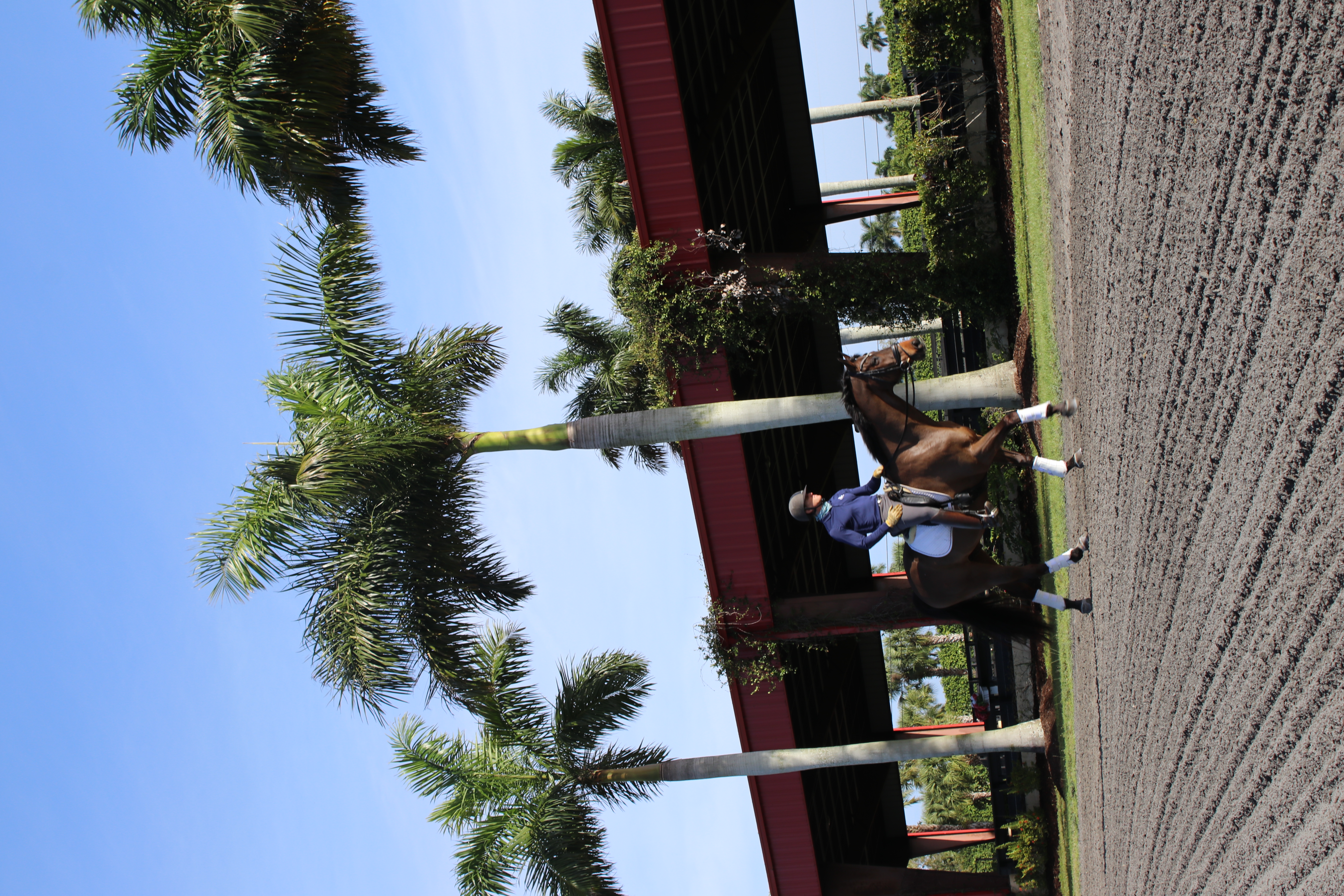
ambitious riders. (Photo by Lindsay Paulsen)
An Emphasis on Fitness. Considering Jan Brons’ level of fitness and commitment to going to the gym, you might assume that he’s simply passionate about exercising. But that’s not really the case. “I hate walking into the gym,” he says. “But I like walking out of the gym,” he adds with a smile. “I like the way it feels afterward; I like the results of doing it. I complain all of the time. That’s why I go to a trainer. If I were to go by myself, I wouldn’t do half of the stuff I do. When I’m there, I want to do as much as I can do. I don’t go there to hang out and socialize. I want to go in and do the best that I can and then I want to leave.”
Brons hits the gym four days per week: Monday, Wednesday, Thursday and Friday. There he relies on his trainer for guidance. Typically, they work on strength training once a week, usually on Monday. Wednesday and Thursday, the focus is on crossfit or cardio work. Friday is a day to address anything that they have missed.
His trainer, Will Holloway at Resilient Fitness, isn’t a rider himself, but he’s experienced in working with equestrians. The gym is an interesting cross-section of the Wellington, Florida, equestrian community, a place where Brons says you can find dressage riders, polo players and jumpers.
Working out at the gym, Brons says, is an opportunity for him to balance out strength and fitness in his whole body, so that all muscles are fit, instead of just the pieces he uses for riding. Although he doesn’t enjoy the process of building fitness, he does it because he recognizes the important role it plays in his riding career. “It’s a physical job and if I want to last as long as I possibly can, I want to keep myself in shape.”
Philosophies on Riding and Life
In life with horses, challenges are inevitable. But Brons thinks about it differently. “I’m not the kind of person who thinks about a challenge as a challenge. It’s just part of life, and you deal with it. I don’t dwell on things like that. I might have a bad day at work and then I get on my bike and I’m done with it. It’s such a waste of energy. I only have so much energy in one day and I want to spend it on something fun or entertaining.” When things go sideways, Brons likes to face it head on. For example, in 2017, as Hurricane Irma approached Florida—at one point as a Category 5—Brons formulated a plan with a matter-of-fact mindset. “I was like, OK, here’s the stuff I need to do: Make sure the horses are moved and safe, everything in the barn is in a secure place and make sure we have enough supplies for a few weeks in case we cannot get any deliveries. I do whatever needs to get done and then I move on.”
That same focus is also helpful when it comes to working, riding and building a business in a town that is home to the hypercompetitive equestrian elite. “I really don’t look at other professionals. I’m friendly, but I’m not necessarily aware of what they do. It might sound selfish, but other people’s lives don’t interest me that much. Of course, clients and really close friends do, but other professionals do what they do. I’ve never wanted to be like anybody else. I want to be like me. I appreciate other people and their work and their efforts, but I never want to be like any of them.”
For those up-and-coming riders who hope to become professionals, Brons offers his advice: “Get ready to work hard. But any business would be like that. The main thing is that you love what you’re doing. I don’t dread waking up. If that’s not what you have in you, then this isn’t for you. I just love riding. I couldn’t think of anything else I would want to do.”
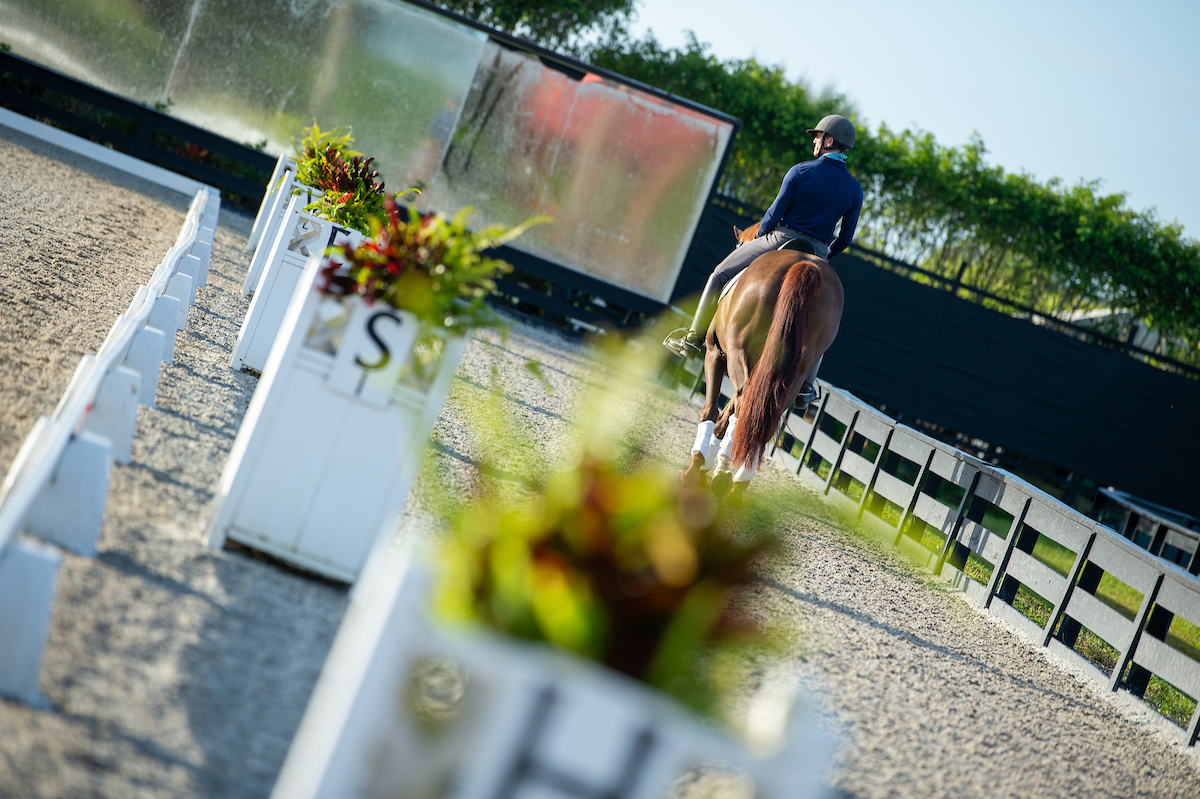
for the future, so Brons stays present. “I try to live in the moment,” he says. (Photo by Amy K. Dragoo)
In planning for the immediate future, Brons is developing Dulcinea and preparing Amy Swerdlin’s horse, Tokayer, for the Grand Prix work, as well as working with horses who need further training for their owners. He doesn’t tend to think toward the distant future, though. “The couple of times I have done that, it totally falls apart. I try to live in the moment.”
Want to read more from Jan Brons? Check out his articles on rider fitness and evaluating progress in your training at DressageToday.com or at bit.ly/jan-brons-dressage.
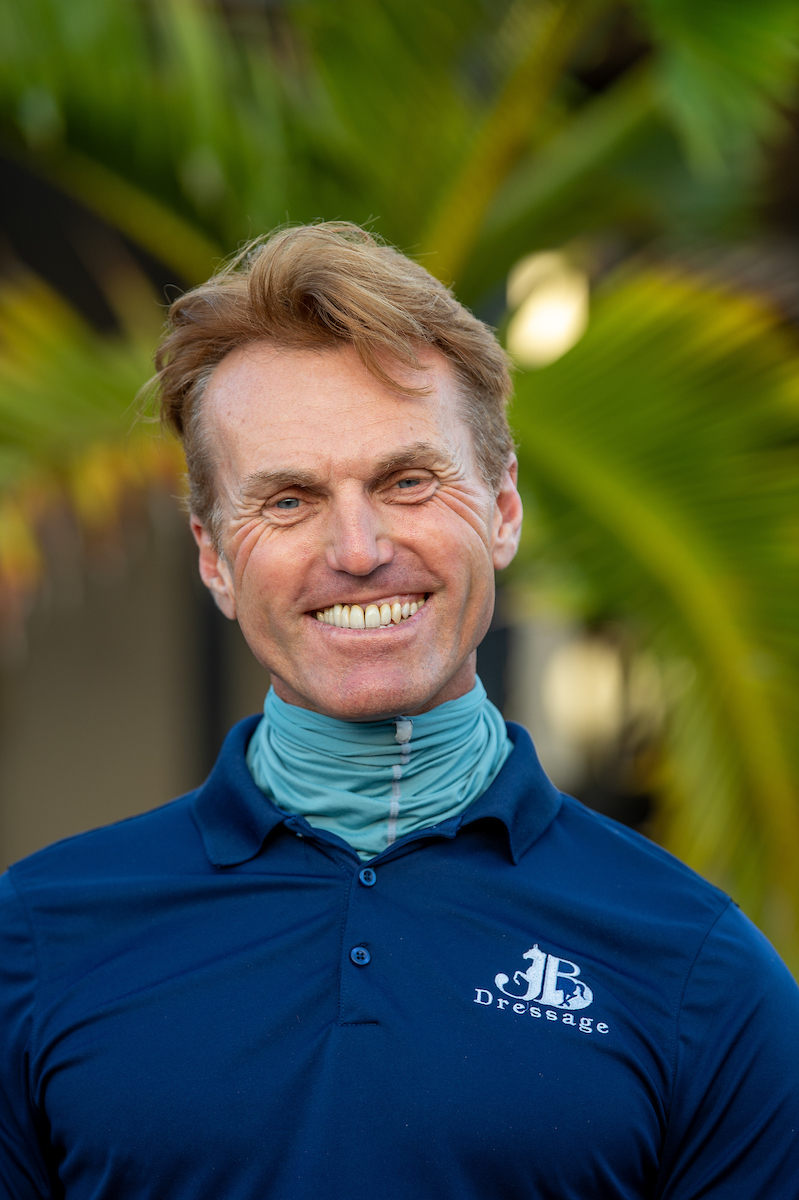
Born in Vlaardingen, Holland, Jan Brons began riding lessons at age 11. He later attended the Dutch Equestrian Center in Deurne, The Netherlands, developing a broad range of skills as a rider. He did vaulting, driving and some eventing while honing his skills in dressage. He arrived in the United States in 1987. He spent 12 years training under Robert Dover, with whom he credits much of his success. Brons has also trained with Grand Prix dressage rider and trainer Linda Smith and was the first recipient of The Dressage Foundation’s $25,000 Carol Lavell Advanced Dressage Prize, which allowed him to train intensively in Holland with Anky van Grunsven in 2010 and 2011. He’s earned multiple U.S. national championship titles over the years from young horse divisions through Grand Prix, and he has also claimed several wins at the regional level. In 2001, he established his business in Wellington, Florida. More than 19 years later, it continues to thrive as he actively competes at the international levels, working with personal and client horses. He has a loyal following of students and travels regularly for clinics.





